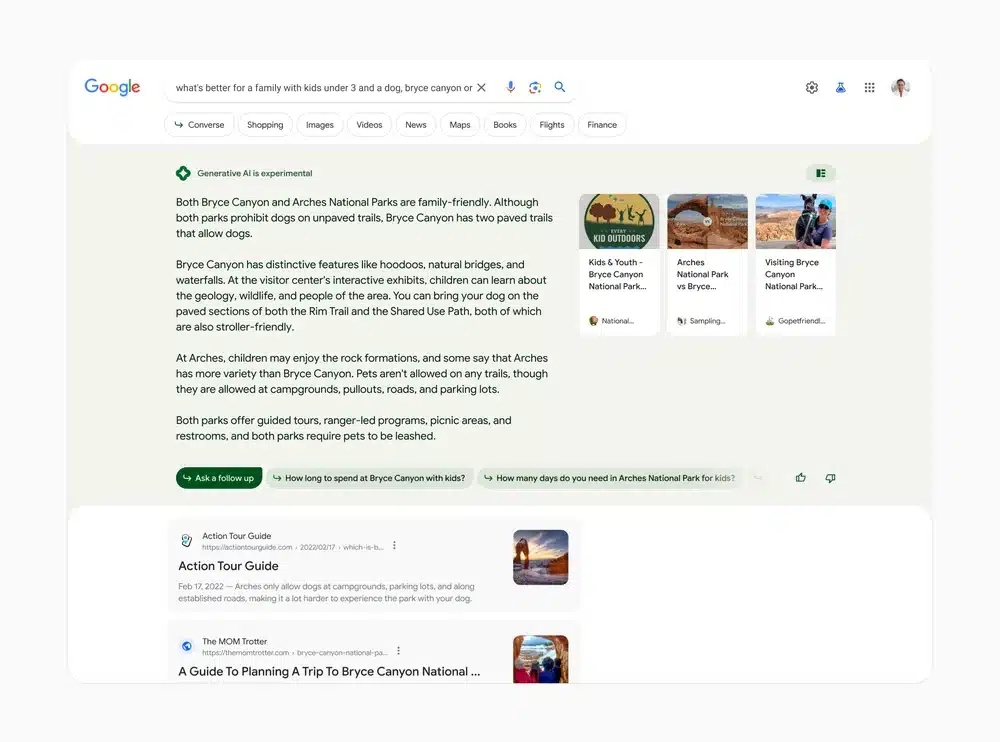One of the regular refrains we often repeat as a team is “don’t kill the engine.” Meaning, we can explore ideas as a business, but we can’t let those ideas interfere with providing service to our clients. If something will interfere with our ability to deliver on our core promise, then we have to reconsider it.
A new idea may require additional staffing or budget in order to succeed. When we recognize that additional resources are required, then we can focus on whether we think the investment is worth it.
The trick here is recognizing that additional efforts we pile onto the schedule will have consequences that must be considered before moving forward. Work requires time and people, so we need to budget accordingly, especially as a small team.
Your Team
Maybe you have a large enough team that staffing your new ideas is not an issue, but rarely will any marketer cry, “I have too many people!” You can’t pursue all the business ideas. More specifically, your team has a cap on the number of marketing efforts you can attempt at the same time.
Your staff would probably benefit from testing out the newest CRM, exploring the latest ad platform features, and trying out the slew of new AI tools that are supposed to make you harder, better, faster, stronger (cue Daft Punk).
At the same time, you have deadlines to hit and goals you need to reach. You can’t throw too much effort and time at exploring ALL the new things.
What’s Working Now
Let’s start with what we know is safe. What pieces are already generating the results you need?
Medtech is a pretty varied field depending on your customer (physician or patient), so different tools will work better for us than others. Still, regardless of the tools you use, the first question is “are these tools still delivering at the same rate and at the same budget as they used to?” Your SEO efforts might have been bringing in strong, steadily converting traffic over the past few years, but that traffic may be waning. Peter Caputa, CEO at Databox posted to LinkedIn about how inbound marketing efforts from a lot of established agencies are already taking a hit in search, and that’s before the many changes from Google’s search generative experience (SGE) reach a wider audience.

Webinars might be less intriguing now that more people are going back to trade shows, and advertising channels that were once performing may be suffering.
Put succinctly, we cannot assume our best tactics will continue to perform. This will only continue to grow in importance over the next six months to a year. The marketing field is ready for some serious disruption. We all need to be vigilant to make sure we’re not throwing away money on outdated tactics. Here’s a quick questionnaire to see if there is time or budget you might be able to free up from the channels that are already working.
Questionnaire for Finding
Budget and Time
- What are your strongest performing channels? What results can you track to these channels?
- Are your results as good as they were a year ago? 6 months ago?
- Can you free up some time or budget from an effort that’s not working as well?
- Do you have any extra time or budget you could use (outside of freed up efforts)?
When to Pause or Pivot
One note on reallocating budgets, there’s a tricky balance between exploring a channel further and knowing when to throw in the towel. I’ll give an example from our marketing efforts.
I really enjoy working with video. I find the format fascinating, and I like exploring the different ways that people can communicate with this tool. Our audience—marketers in medtech companies—happen to be on LinkedIn regularly enough. Easy. I had my formula: video + LinkedIn = loads of success and engagement.
Except, it didn’t turn out that way for us.
Our engagement was very low, and, it turns out, video often has low engagement on LinkedIn. (Not always, but often. I highly recommend Richard Bliss as a voice to follow on the platform. Some recent conversations convinced me to not focus my time on LinkedIn video anymore.)
Now, we’re pivoting. Video will function more for landing pages and webinars (coming soon!)—not social media efforts.
It turns out video was time-consuming for us, and we were seeing little return for our effort. Now, we have freed up some time.
Available Budget & Time Questionnaire
- If you applied freed up resources to efforts that are already working, would you see a return? For example, if you increased the budget for your Google Ads keywords, is there enough demand to use up those dollars while providing more leads?
- How could you apply extra budget or time to explore new features within channels that are working? Should you spend some time on that new ad platform feature? What about a new CRM integration?
- Where could you explore something totally new?
If you’re like me, the last question is the most exciting and the most daunting—particularly in times when budgets are strained. When medtech companies are in the midst of reorgs and spinoffs and everything else, starting a new initiative requires more courage. Yet, if you take no chances, then you’re more of a caretaker than a business person. (We spoke more about this balance for startups and for enterprise companies in our article Keeping the Vision for Your Product in a Hard Economy.)
I think the most pressing issue to consider at the moment is whether you can generate buy-in for an exciting new idea that may take 18 months to show real return. A year and a half is not an unreasonable amount of time. Still, leadership may be focused on a shorter timeframe.
What about the First-Mover Advantage?
For every new social media platform that pops up, there’s a bit of me that wants to dive in and become one hundred percent proficient in that tool. I want to be the expert on Mastodon or BlueSky (still waiting on my invitation), even if I don’t know if these platforms will actually help.
Early adopters certainly have a potential advantage on these platforms, just as they do in business. eBay and Amazon defined their categories, and they still function as the rulers of their domains. They fought through the struggles of training people to understand what an online auction platform was. They showed people that buying books online could be quick and painless.
For the people that can conquer new technologies and attract the right kind of audience on a new social media platform, they can get well ahead of competitors by the time they make it over there.
A Second-Mover Advantage?
Ryan Holmes, founder of HootSuite, wrote an interesting article on Medium on why companies or marketing departments might intentionally choose to be second or third or fourth to make the leap in a new business or new marketing venture. The article is worth a full read, but Holmes argues that the trailblazers prove that there is an audience for a new type of business. With that hard work out of the way, other companies can follow suit. Other companies can also learn from the trailblazer’s mistakes and differentiate themselves to a section of that audience.
Personally, I’m spending more time listening to the curators and advisors on what platforms are attention-worthy. These folks are preparing a number of templates and recommendations around the ways we can benefit from these tools without having to endlessly test. I included some tech voices worth your time in a previous article. Who would you add to the list (either as a technologist or as a marketer)?
Here’s My Exception
Ok, I’m saying that we should prioritize innovation within channels that are working and channels that other people can prove out for us. For a heavily regulated environment with constrained budgets, that’s my advice.
Except…
The customers are the guiding light.
If your customer group is bullish on all things NFT or metaverse or whatever… then it’s time to jump in.
I think this is especially interesting for any companies that work directly with patients / consumers. Being able to interact with folks in a Facebook group or a virtual reality platform or a gaming community may be the best play you can make to go where customers are.
This means you need to have a way of gathering intel from your customers on a regular basis. In your company, that may just mean listening to your sales people’s experiences more closely. Maybe you need to set up surveys or look for ways to “tag along” on customer engagements in some fashion. Hearing where your customers are, learning what they need… these are the critical drivers to your marketing innovation.
Michael spends a great deal of time with the healthcare industry both professionally and personally, which gives him the perspective of what stakeholders on either side of the care equation need.
He began coding in 2008 and subsequently shifted his attention entirely to online marketing. Michael completed his MBA in 2018, focusing on the intersection of healthcare and marketing.


